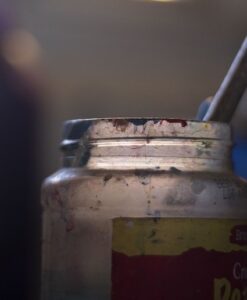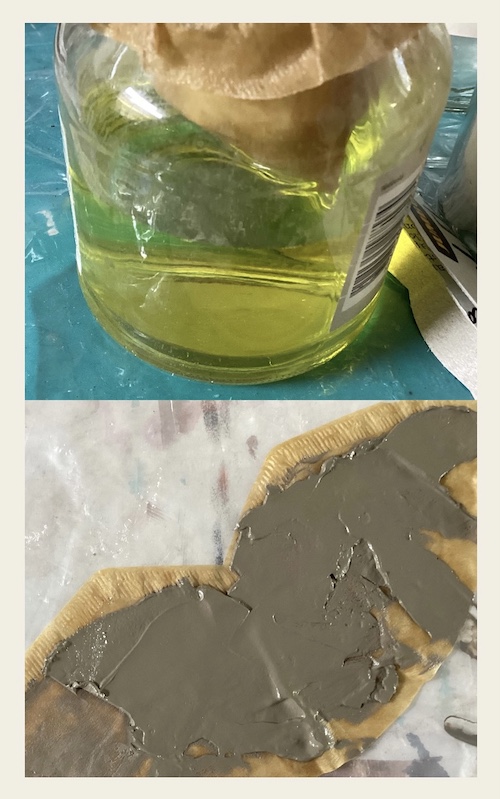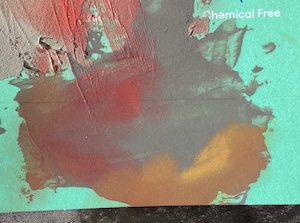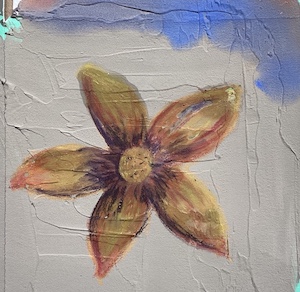Waste processing
I recently came across an article from Jackson’s Art in the UK that was about how polluting acrylic paint really is in our industry. The first half was disappointing to me, because the conclusion was that we artists only contribute a tiny fraction of the total microplastics from acrylic paint to the big pile and that it was so minimal that we didn’t have to worry about it.
Gnome thinking….
Fortunately the article continued and that made me happy, because an experiment was done with filtering the rinse water with acrylic paint. Aluminum sulphate and calcium hydroxide, i.e. an acid and a base, were used to cause the acrylic component to clump together. In short: it can then be put through a coffee filter and you are left with the clean water and the acrylic sludge in the filter. This can then be thrown in with the regular waste. Ha! And that’s where I come into play again, because is it possible to do something with that sludge? Maybe let it dry completely into powder and use it again as paint?

I wanted to do the experiment myself and first decided to provide some boxes that I want to use to send paintings with nice colors of acrylic paint that I still had lying around from my old, ignorant artist phase. I was left with a jar of dirty water, approximately 250 grams.
Now I didn’t have those two powders immediately available and purchasing them meant buying 500 grams, so I decided to see what I did have in terms of acids and bases. I had alum and baking soda. Of course I checked the internet to see if these two had any strange or dangerous reactions after merging and followed the instructions in the Jackson’s Art article.

It worked! In the end I was left with a coffee filter of gray stuff and beautiful yellow, clear water. Where that yellow came from is anyone’s guess. Maybe a pigment?
I decided to open the filter on a piece of waste plastic to let it dry, but this took a long time. Very long. Way too long. The smear that accidentally got on the plastic had dried, but not into powder. It was a layer that was impossible to remove from the plastic and felt a bit rough. Suddenly I had a lightbulb moment, because in the meantime I had also started looking into making gesso for soft pastel myself.
I spread a little on a piece of cardboard and when it was dry I went over it with pan pastel. The result is great!
I immediately spread the rest of the sludge on 2 pieces of larger cardboard, 1 of which even twice and rolled it over with a paint roller. It looked neat and worked extremely well with pan pastel.


I was curious if Inktense pencils would also work on it and yes! Also pretty!
I used the Inktense with water to bring out the intense colors and it also showed that the gesso 2.0 is waterproof.
I’m so happy with the result that I almost started working with acrylic paint again. Haha, no, just kidding!
It’s great that we can reduce microplastics in the environment with these types of techniques, but it is of course better not to let them end up there at all. Moreover, I am already hatching a better plan to reduce the minimal microplastics we add to even less. (Cliffhanger)….
